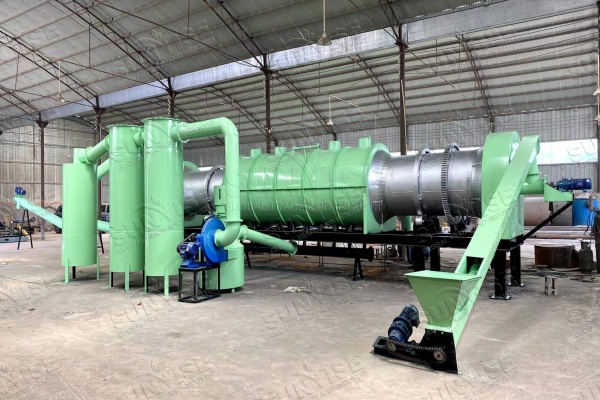Charcoal production is a time-honored craft that has been practiced for centuries, with applications ranging from fuel to filtration and even art. The process of making charcoal transforms organic material into a carbon-rich product that burns cleaner and more efficiently than raw wood. While the fundamentals of the process have remained consistent, modern techniques have enhanced efficiency and environmental sustainability. This guide explores the intricate stages involved in charcoal production.

Selection of Raw Materials
The first step in charcoal production is the selection of appropriate raw materials. Hardwood species such as oak, maple, and hickory are commonly preferred due to their dense structure and high carbon content. The choice of wood affects the quality and burning characteristics of the final charcoal product. In some regions, coconut shells and other agricultural residues are also used for charcoal production, offering a more sustainable alternative to traditional wood sources.
Wood Preparation and Drying
Once the raw materials are selected, they undergo preparation, which includes cutting the wood into uniform pieces to ensure even carbonization. This step is crucial for producing high-quality charcoal with consistent properties. The wood is then dried to reduce its moisture content. This is typically done by air-drying or using solar kilns, which help lower the moisture content to below 20%. Proper drying is essential as it minimizes smoke production and increases the efficiency of the carbonization process.
Carbonization Process
The heart of charcoal production lies in the carbonization process. This involves heating the prepared wood in a controlled, oxygen-limited environment to convert it into charcoal. Traditional methods use earth mounds or brick kilns, while modern approaches employ metal kilns or retorts. The key is to maintain a temperature range between 400°C and 700°C. During this process, volatile compounds are driven off, leaving behind the carbon-rich material known as charcoal. The duration of carbonization can vary, typically taking several hours to days, depending on the method and scale of production.
Cooling and Conditioning
After carbonization, the charcoal must be cooled slowly to prevent it from igniting upon exposure to air. This is done by sealing the kiln and allowing it to cool over several hours or days. Once cooled, the charcoal is removed and conditioned, which may involve further drying and breaking it into smaller, uniform pieces. This ensures that the charcoal is ready for packaging and eventual use.
Packaging and Distribution
The final stage of charcoal production involves packaging and distribution. Charcoal is typically packaged in moisture-proof bags to maintain its quality during storage and transport. Proper packaging is important to preserve the charcoal’s properties and to ensure its ease of use for consumers. Once packaged, the charcoal is distributed to markets, where it serves various applications, from grilling and heating to industrial and artistic uses.
Conclusion
The process of making charcoal is a blend of traditional wisdom and modern innovation. By understanding and optimizing each stage—from raw material selection and drying to carbonization and conditioning—producers can create high-quality charcoal that meets the diverse needs of its users. As demand for sustainable energy sources grows, the art of crafting charcoal continues to evolve, offering a promising future for this age-old practice. Visiting: https://www.ysxcharpro.com/product/charcoal-production-line/
Leave a Reply